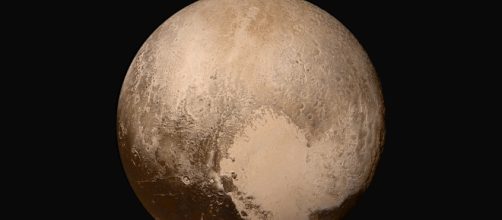Recently Alan Stern, the principal investigator for the New Horizons probe that flew by Pluto in July 2015, was in Houston attending a workshop with dozens of scientists plotting a return to the once and future ninth planet from the sun. The hope is that such a mission, which would orbit Pluto and examine both it and its system of moons, would get funding for a launch sometime in the 2020s. That schedule would place the robotic expedition around the world now called a dwarf planet sometime in the 2030s.
According to the Verge, New Horizons, as impressive as it was, only examined Pluto for a day and returned images from one side of the frozen world.
It took images of its moons, such as Charon, but some of them were only distant and fuzzy. What is needed is an expedition of the scale of Cassini, which is just finishing a 13-year mission to Saturn and its moons.
For decades, ever since it was discovered in 1930 by Clyde Tombaugh, Pluto was a mysterious point of light that was the subject of endless speculation. The 1978 discovery of Charon and the subsequent discoveries of a number of other moons barely provided more illumination of the nature of Pluto, though it allowed scientists to measure its mass.
The discovery of other objects nearby in what became known as the Kuiper Belt caused a few scientists to cast doubt on Pluto’s status as a planet.
In a controversial decision that is still dividing the scientific community, the International Astronomical Union decreed that Pluto was not a planet at all, but something called a “dwarf planet.” The decision has been derided by many scientists, including Dr. Stern, as being arbitrary.
The controversy deepened when New Horizons discovered that, far from being a dead world of rock and ice, Pluto was something that has never been seen before, The once and future planet had geological processes, glaciers of frozen nitrogen, enormous ice mountains, and even a tenuous atmosphere. Some scientists even think that Pluto has an internal ocean, similar to ones believed to exist underneath Europa and Enceladus, moons of Jupiter and Saturn.
Pluto cries out for a return visit, this time a satellite that will orbit it for years, examining the entire planet and its system of moons over time, noting changes as they occur. The Pluto Orbiter could be launched directly by a heavy lift Space Launch System, eating year off of its flight time to the edge of the Solar System. It could be powered and propelled by a fusion energy reactor being developed by the Princeton Plasma Physics Lab. In a solar system with so many fascinating worlds to visit. Pluto has to be on the top of that long list.

